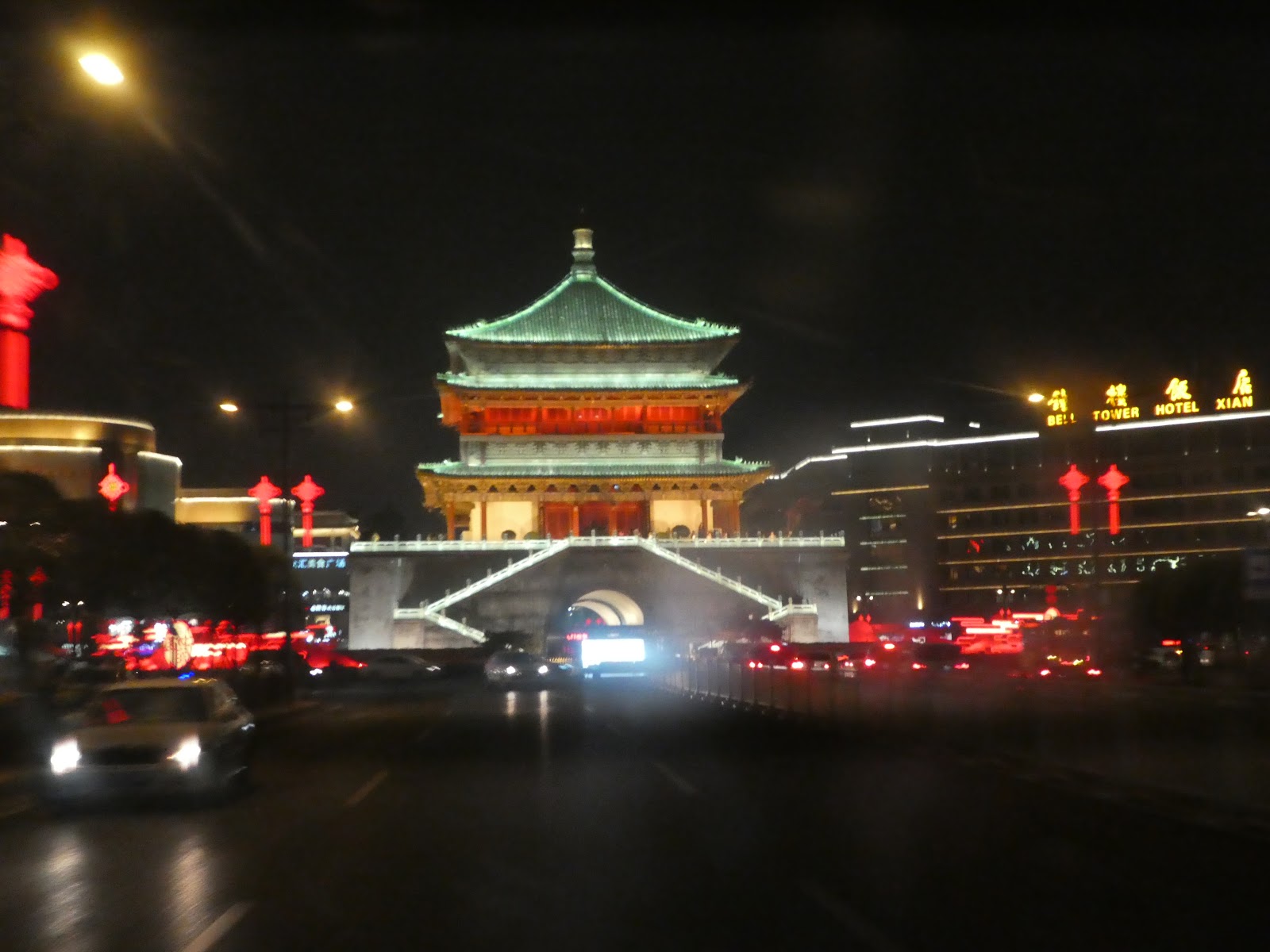22 April 2018
Xi’an China
We are off to visit the 8th man-made wonder of the world, the Terracotta Warriors. Our first stop is a factory where we learn how the warriors were made from terracotta clay. They were fired in a kiln and painted, outside of each pit, and carried down a ramp and placed at there own spot on a brick laid floor. This is the first brick floor known to be created. Every single warrior and horse was unique. To give a scope of how many warriors there are, in Pit One (the first pit to be discovered), there are 3,000 warriors, some with horses. So far, three pits have been excavated. The third pit has about 68 warriors standing in ceremony formation, two lines of men facing each other, rather than practical battle formation, facing east with just the outside line facing outward. So far, 180 pits have been discovered using ultrasound technology. It is believed that there are about 600 pits in all. The kids had fun checking out the warriors.
Back to why these warriors are here and how they were discovered… In the Qin Dynasty, 221 BC to 206 BC, the Emperor was very powerful and wanted to be sure he was protected in the afterlife so he ordered for thousands of warriors to be built near his tomb in Xi’an, which was the capital of his Empire. This Emperor was 13 years old (Hayden’s age!), when he came to power. By the time he was 38 years old, he united the seven kingdoms of surrounding him. Prior to the Qin Dynasty, the period is referred to the Warring States Period. He also standardized the currency and the written language of the seven kingdoms, the Qin Empire, which is known to westerners as China (Qin in pronounced Chin). For Chinese, they refer to their country as teh Middle Kingdom. Qin was the Emperor who had the Great Wall built to keep Mongols and other enemies out of his hard-won kingdom. He died at the age of 50 years and the pits of warriors was almost complete. It is told that he was a powerful and clever leader, but also cruel. He buried ALIVE at least 68 of his concubines who did not have children and some of who did, as well as 48 scholars, so they could not record where his tomb was. He wanted to be absolutely certain to stay protected in his afterlife! He was powerful, clever, cruel and more than a little crazy.
He secret was well kept for 1750 years until 1974 when a farmer was digging a well and dug up broken pieces of terra cotta clay in the corner of the first pit. He alerted the Chinese government who went on to discover this wonder! At the time, the land all belonged to the government. The farmers who lived in the area were given land in other places. The farmer who discovered the first warrior was moved, but was given a house nearby.
Lydia’s hair represents a low rank infantryman’s hair, with one knot on the side. We learned that two knots shows higher rank, as seen on the General to Hayden’s right. Also, the number of ribbons (bows) on the armor shows rank. This general has bows on his front, shoulders and under his chin.
Obama’s terracotta face
Also at this factory, we observed silk weaving
The silk worms!
Little tiny worms
Before heading into the museum
Pit one. Impressive. Each of these warriors have been discovered in pieces, placed back together and put in his original position. Each warrior takes between 3-12 months to restore. This pit still has unopened areas. They are waiting until the preservation technology is improved before opening the additional areas. The warriors were all painted with brilliant colors which has faded once exposed to light.
The walls between the lines of soldiers were built so they could support wooden beams which were covered with canvas, for a roof. The roof was then covered with earth so the warriors would be safe from discovery, 15 feet below ground level.
One of the walls has a hole in it which contained a family’s tomb. They created their tomb without realizing they were amidst the protection of an Emperor’s entire army.
The horses each pulled a wooden chariot. The wood has disintegrated, leaving the charioteer standing behind in the position he would be in on the chariot, holding the reigns.
Here you can see the hole in one of the walls, behind Lydia, where the family was buried.
The sign to the left marks where the farmer dug his well. He almost missed this amazing discovery.
The details of the armor, including rings to hold the arrows for this archer.
The horses even were given teeth, showing how old they were.
The marks from one of the chariot wheels. The wooden wheel is gone, but the print is still in the clay.
Excavation and restoration is ongoing.
None of the warriors in Pit 3 have heads. The warriors, over the years, were destroyed in earthquakes and floods.
Yet to be restored.
Hand made noodles at lunch buffet
Buffet lunch
Eliza’s carrot haired character, Ann
The kneeling archer which is, so far, the only warrior found in complete and original form.
Chrome plated swords that were still sharp after 2200 years!

Impressive details.

Wooden structure to protect the warriors at the time they were built.
Impressive details.
Wooden structure to protect the warriors at the time they were built.
We headed back to the city for dinner and then an opera show about one of the emporesses.


Back to the hotel for some ZZZ's.
Back to the hotel for some ZZZ's.

No comments:
Post a Comment